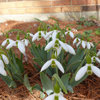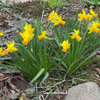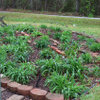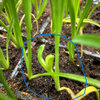Really bummed....favorite established clump is dead
squirrellypete
11 years ago
Related Stories

GARDENING GUIDES6 Dependable Ground Covers for Warm Climates
Swap some lawn for these drought-tolerant clumping plants — and watch your maintenance efforts diminish while they easily grow
Full Story
FLOWERSRudbeckia Mania: Go Beyond Black-Eyed Susan in the Garden
Branch out from typical nursery fare, with lesser-known Rudbeckia species that have delightfully unexpected features
Full Story
PLANTING IDEASWant a More Colorful, Natural Garden? Try a Perennial Meadow
Spend less time tending and more time taking in the sights by improving on Victorian and prairie garden designs
Full Story
KITCHEN DESIGNTrending Now: 25 Kitchen Photos Houzzers Can’t Get Enough Of
Use the kitchens that have been added to the most ideabooks in the last few months to inspire your dream project
Full Story
FRONT YARD IDEASBefore and After: Front Lawn to Prairie Garden
How they did it: Homeowners create a plan, stick to it and keep the neighbors (and wildlife) in mind
Full Story
LANDSCAPE DESIGNGet Along With Less Lawn — Ideas to Save Water and Effort
Ditch the mower and lower your water bill while creating a feast for the eyes with diverse plantings and gathering places
Full Story
MOST POPULARMeet a Lawn Alternative That Works Wonders
Carex can replace turfgrass in any spot, is low maintenance and adjusts easily. Add its good looks and you’ve got a ground cover winner
Full Story
GARDENING GUIDESGet on a Composting Kick (Hello, Free Fertilizer!)
Quit shelling out for pricey substitutes that aren’t even as good. Here’s how to give your soil the best while lightening your trash load
Full Story
GARDENING GUIDESGrow Your Own Privacy: How to Screen With Plants and Trees
Use living walls to lower your home and garden's exposure while boosting natural beauty in your landscape
Full Story
PETSHouzz Pets Survey: Who Rules the House — Dogs or Cats?
New data shows that pets make people happy, and pet owners love spending big to return the favor
Full Story










Maryl (Okla. Zone 7a)
dragonfly183
Related Professionals
Danbury Landscape Architects & Landscape Designers · Milwaukee Landscape Architects & Landscape Designers · Byram Landscape Contractors · Gallatin Landscape Contractors · North Potomac Landscape Contractors · San Pedro Landscape Contractors · Sun City Center Landscape Contractors · Vashon Landscape Contractors · Wheat Ridge Landscape Contractors · Bowling Green General Contractors · Cedar Hill General Contractors · Hagerstown General Contractors · Haysville General Contractors · Newington General Contractors · Perrysburg General ContractorsNancy
wildbirds
swontgirl_z5a
organic_kitten
Julia WV (6b)
squirrellypeteOriginal Author
Ed
squirrellypeteOriginal Author